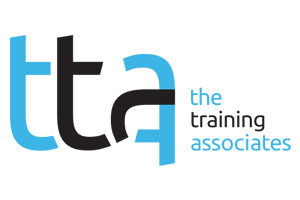In today’s workplace, it seems like the only constant is change. Organizations need agile leaders who can quickly adapt to evolving business needs and guide their teams through uncertainty. Of course, this is easier said than done: Leaders need training and development to build key skills like resilience and agility.
In this episode of The Business of Learning, we spoke with Jennifer Garvey Berger, an author and the CEO of Cultivating Leadership, and Mindy Vail, an author and the founder and CEO of The MindShift Effect, for tips on developing agile, future-ready leaders.
Tune in now for insights on:
- The skills leaders need to manage change.
- Navigating the human side of change.
- Innovating strategically to avoid burnout.
More Resources:
- Article: Developing Agile Leaders: Navigating Change With Foresight and Flexibility
- Article: Change Happens! Why Leadership Agility Is a Critical Capability
- Research: Training Industry Research Catalog
- Certification: Agile Certification for HR and L&D
For insights on developing leaders at all levels of the organization, download a free preview of the e-book, “Experience Matters: Developing Leaders at Every Level” below:
(
The transcript for this episode follows:
Sarah Gallo: Welcome to the learning leader’s podcast from Training Industry, where we speak with industry experts and thought leaders on all things learning and development.
Sarah Gallo: Hi, welcome back to The Business of Learning. I’m Sarah Gallo, senior editor here at Training Industry.
Michelle Eggleston Schwartz: I’m Michelle Eggleston Schwartz, editor in chief. Before we begin. Here’s a brief message from our sponsor.
[Ad]
As a training professional. Your job is to effectively manage the business of learning. You probably tune into this podcast to gain insights on L&D trends being used by some of the most innovative thought leaders in our market. But did you know that Training Industry also provides data-driven analysis and best practices through our premium research reports, our entire catalog, including reports on deconstructing 70-20-10, learner preferences, modern learner experience and AI’s impact on L&D, just to name a few, can be found at trainingindustry.com/shopresearch. New insights create new ways for L&D to do business.
Let Training Industry research reports take your training initiatives to new heights. Go to trainingindustry.com/shopresearch to view the entire catalog.
Michelle Eggleston Schwartz: Today’s workplace continues to face unexpected challenges, which are largely reshaping how we work and learn. As a result, today’s leaders need to be able to thrive in the face of change and to guide their teams through uncertainty and into the future. So today we’re speaking with two experts to learn more about developing agile and resilient leaders. With us, we have Mindy Vail, an author and the founder and CEO of the MindShift Effect, and Jennifer Garvey Berger, an author and CEO of Cultivating Leadership. Mindy and Jennifer, thank you for speaking with us today.
Mindy Vail: Thank you for having thanks for having us.
Sarah Gallo: Yes, welcome. We’re excited to dig into this topic today and to kick us off. I’m hoping you can both describe an agile leader. And are there any key traits or skills that agile, agile leaders have?
Mindy Vail: Yeah, in my experience I found that agile leaders that they are more proactive than anything. They don’t wait for situations to happen and then react. It’s those leaders who can really stay ahead of game, constantly thinking about what’s coming next and preparing their teams for that, whether that be through training or communications or working with Hr. Operations to make that that change happen. Proactively and seeing the bigger picture and how it aligns to the company strategy. That’s all about being an agile leader.
Jennifer Garvey Berger: I love this idea of proactivity. I think I’ll I would add to it the capacity to not get so in love with their own ideas that they can’t adjust when the world is asking for an adjustment. So people who are really in touch with what is needed in this moment and this moment and this moment, who can move to create the possibility that they can respond in this moment to the world as it’s unfolding.
Sarah Gallo: I love that being proactive and able to adjust on the fly is definitely key here. So thank you both for kind of defining that for us to get us started. And I know Michelle mentioned earlier that today’s workplace really is evolving so quickly and with that in mind, why is it really important that today’s leaders can effectively navigate change?
Jennifer Garvey Berger: I think if they don’t effectively navigate change they don’t have much of a job these days. It used to be that leaders needed to kind of gear up, to handle, change whatever the period was, and the period was different in different industries and that period got shorter and shorter and shorter across industry. And now things are changing so quickly, and from so many different directions used to be, the company would decide to do a reorg. But now the market shifts, and suddenly the company is pivoting to make changes that they weren’t planning to make that they didn’t particularly want to make that aren’t in their strategic plan for this year. And suddenly they have to do it. And so leaders are now leading change all the time.
Mindy Vail: Yep, and exactly what you’re saying… I think that at the end of the day leadership and change management go hand in hand. They’re intrinsically intertwined, and we used to see them as siloed areas. We would teach leadership development and we would teach change. Management and change. Management was very academic and approach. It was very complex. Leadership were the soft skills. And now it’s one of the same. You cannot have one without the other. And when we teach them in silos and train our employees in silos, it’s just not as effective. I think, to your point it. It’s understanding that change, although it’s inevitable, and although it’s just a fact of life, it still disrupts our routines right, and it really still pushes people out of their comfort zones and creates that uncertainty, and it brings up emotional responses like anxiety or even resistance, which we don’t love to always deal with in the workplace. But we kind of have to. We have to lead with empathy, understanding that people bring their own experiences and baggage to the workplace when change occurs and they’re going to respond in many different ways. And we need to, as leaders understand why are they reacting the way they are? And how can we help support them through that change and those reactions that they have to change.
Jennifer Gavey Berger: I think we also, I totally agree with you. And I think that the emotions people bring into change are part of the fuel of change and part of the creativity of change. So it’s not just I think, for so long kind of “leave your emotions at home” has been has been what people have kind of wished people could do. Now, I don’t think we want to be as much like machines as possible. I think we have machines that do machines really well. And I think what we want to do is humans really well? And so, in addition to managing the idea that all the humans around you are having emotions right now, and the change really sparks both strong excitement. It’s also true that the leaders themselves are having emotions, and that those emotions are affecting the emotions of the other folks. So I once worked with the leader.
and I had asked the question, “How many emotions do you have in a day?” And he said, “One, maybe two.” And actually, we’re having emotions all the time. We have thousands and thousands of emotions in a day and understanding that and working with it instead of fighting against it, I think, is a key piece of leadership and change management these days.
Michelle Eggleston Schwartz: I completely agree, like organizations really need to recognize and address that managing change. The emotional aspects, like the human side of change, as leaders needing to help address both like that emotional side, and like the technical side of change is really needed. And to your point, Mindy, like it, can no longer be siloed, like it’s one. And so kind of with that when we’re thinking about developing leaders, what tips do you have for developing leaders who can guide their teams through uncertainty?
Jennifer Garvey Berger: I think it’s a yeah. Go ahead.
Mindy Vail: Go ahead.
Jennifer Garvey Berger: Go ahead. Go ahead, Mindy.
Mindy Vail: I was just going to say that it’s getting leaders to embrace a growth mindset more than anything that that we have evolved, and we have to continue to evolve with society, with norms, with all of the pressures that we have, and opening our minds to, there may be other ways to do things, and we know this from changing our world of five days a week in the office to now shoot. What do we do? Do we go with the remote workforce? Do we go with a hybrid model? What does that hybrid model look like? And being able to develop our leaders to think beyond what we just have been conditioned to know as the normal way of life for work, that’s going to prepare them to lead their team and being able to see what their own limitations are around those issues is number one. And then they can really realize like, why do I get hung up on these things? Why? Why am I resistant to this change? And as they become more self-aware, then they can help their teams and guide them through that change, whatever that may be. It’s that emotional intelligence really is what it boils down to for me.
Jennifer Garvey Berger: And I love that you bring up this idea that they need to know themselves as growing, changing beings. I think one of the things. That’s really kind of an unhelpful story is the idea of well, that’s just the way I own, you know. Like, “Well, that’s just me, you know I’m just the way I am, and that’s the way I’ve always been.” Actually, we are changing and growing so much all the time, whether you have a growth mindset or not, you are growing. And so, it’s how connected are you to this idea and the path of growth? And how much are you able to intentionally evolve yourself as opposed, and others as opposed to just hoping that either you won’t need to change that much or something magical will happen to you to get you to change, you know. Often, often organizations act as if there’s like a magical thing that happens with promotion. Right? If I promote you promote you, you will magically be able to have the sophisticated vision that you need to deal with in this new position. Actually, we know a lot about how humans develop, and we know a lot about what it takes to help them develop. And we could use that more.
Mindy Vail: I love that you brought up that comment about, “I’m just who I am, and I’m not going to change for anyone.” We actually in a previous company that I was with had a merger, and the new boss came in and said that to the staff, “If you don’t like the way I do things, sorry
I am who I am, and this is the way I work.” Wow! And and when you said that it’s just like, oh, it made me sink because I went right back to that place of feeling like, well, this is not going to be a psychologically safe place to work anymore. Right? Because we’ve got this person who has a very fixed mindset of who they are and how they’re going to approach business. And it didn’t feel good.
Jennifer Garvey Berger: Yeah. And the sign that the sign that they were putting up was, you need to adjust to me correct because I can’t adjust.
Mindy Vail: That’s right.
Jennifer Garvey Berger: And this is like the opposite of agile leadership. Right?
Mindy Vail: That’s right.
Jennfier Garvey Berger: Putting up a sign that says, “I can’t move.” This is just the way is saying, “I am not an agile leader, and I don’t intend to become one.”
Mindy Vail: And don’t you think that’s just really a cop out for them? Not wanting to do the tough work because it’s uncomfortable, right? I mean doing the internal work is uncomfortable sometimes. And so say, that is really just a “I don’t want to do work. So now you guys have to accommodate my stuff.”
Michelle Eggleston Schwartz: Oh, definitely, as you guys pointed out, leaders play such a critical role in helping employees manage change like coming in with that “I’m not going to change” attitude isn’t really going to help anything. So kind of with that, how else can leaders support their teams during times of change and uncertainty.
Jennfier Garvey Berger: But I guess we’ve talked some about emotions. I think that understanding that there are going to be a lot of emotions and making room for them, I think, is number one to understand that people might be feeling afraid or anxious or sad as change unfolds, and being able to tolerate those people’s emotions and not … I’ve been with so many leaders who say “Yes, but if we acknowledge that they’re afraid it’ll make people more afraid. If we acknowledge that they’re sad, it’ll make people more sad.” But actually, research would suggest that, as you acknowledge people’s emotions, they can release them, and by not acknowledging them. They have to kind of dig in and prove why they’re afraid and why they’re sad, and they actually amplify, and so letting people have spaces where they can be humans together, I think, is incredibly important. And then helping people hold steady in the confusion, understanding as your leader, I can’t control it either. Nobody is totally in control right now, because the world is so complex. Nobody controls complexity. That’s not the way that happens. But giving people the kind of strength and confidence to understand that even though nobody’s fully in charge collectively, we are strong, and together we can move forward.
Mindy Vail: I love that you. You’re making me think of human beings’ core need to feel, heard and seen and valued. We all need that. We need that in our relationships at home. And we need that in our relationships at work. And when you have leaders who are truly accessible and present and who are able to actively listen to the needs and concerns and questions. Not that they’re going to have the answer to everything, and not that like to your point, but not that they’re going to be able to control everything because they won’t be able to, but to be accessible, visible and present is huge. It’s huge, right, and making themselves available for feedback is one of the things that I focus on a lot with my clients of. How well do you give it, which normally is pretty easy for people — except when it comes to difficult feedback. But it’s really it can be very uncomfortable to receive feedback as leader, and that’s part of being present. That’s part of being accessible and being able to say, “Hey, I’m here, and I will listen to you, whatever that is. You need to share with me.” And truly, having that space for your team to share ideas, air out their concerns. And that’s not natural for most people. And again, that takes that internal work that is sometimes kind of messy, and sometimes people aren’t willing to do that because it’s scary. And I totally get that I acknowledge that in all my client sessions, this can feel uncomfortable and yucky sometimes. But, boy, will the payoff be huge?
Sarah Gallo: Yeah, that being present piece, and that almost mindfulness, which we know is really difficult, especially when everything is so fast paced and complex. It’s really, really hard, but also. So key like you’ve both mentioned. I do want to pivot and talk a little bit more about some of those challenges that that leaders might face if they can’t be agile and flexible in today’s work, environment, what do those look like
Mindy Vail: For me, I’m dealing with this right now with a couple of my clients in totally different industries, and it is the negative impact that it can have on team morale and engagement. I’m seeing more and more people feeling less fulfilled in their jobs, working at the same company that they’ve been at for a few years. And I think that the result is the challenges of putting so much on people’s plates to where it’s just falling over the edges, and the bandwidth is just not there for anyone to take on anything more than what they already have, and it’s really hurting the feeling of pride at work and wanting to stay for the longevity … people are feeling burned out. And so it’s, it’s a challenge for leaders to be able to say, Okay, what other resources do we have that we can access. What other ways can we attack this problem or project or process? Do we have ulterior access means to tackle this or do we not? Is this something that we can’t take on right now, because there’s so many pressures …
and then the leaders again, they feel pressure. So they just push it off, not understanding that you’re adding more and more and more and more. And then, when we talk about employee well-being, we’re putting that at risk. And again, that comes to emotions, and we don’t always like to talk about emotions. But it’s critical.
Sarah Gallo: We have to.
Jennifer Garvey Berger: Yeah, yeah, this I. This idea of burnout, I think often comes when you’ve got a leader who’s not very agile. And then the thing that they know how to do is what they’ve done before only harder. And so they drive their teams to do basically what they’ve done before in the way that they’ve done it before, only harder, because they figure, “Oh, they need to be harder working. They need to do it more hours.” Or, “Maybe I need to swap this person out, because I’m sure that if they were just doing it right, it would go the way it used to go.” And so the problem is that my team and you really do see people being burnt through, right? Teams being changed over and changed over and changed over. And you’ll have to ask yourself, like, “What’s a different way?” This question that Mindy’s pointing to like, “What are we trying to do with yesterday’s tools, with yesterday’s approaches, with yesterday’s problem-solving capacity?” When really what we need to do is something entirely new. And how? How is this world calling for me to be new and my team to be new, and our approach to be new. This, then, opens up fabulous veins of creativity, innovation, excitement, drive, but the grind of beyond the hamster wheel you’ve always been on only run faster. I don’t think that’s going to get us very far.
Mindy Vail: And I’ve also seen that with as we’ve opened up into this global, remote workforce. It’s been there. But now it’s really permeating the air that jobs are being offered to.… Let’s just say I’m going from a from a specific example that I have with a client. A job was offered to an employee in Brazil rather than being given to her here, and that is a hard pill for her to swallow, because it could have led to a promotion here in the next year for her. But instead, that responsibility was given to someone who they can pay less for doing a very similar job. And so that’s a challenge that leaders are definitely facing right now of really, this global, remote workforce has impacted morale potentially, burnout inequities, feeling of inequities.
And it’s opened this whole new world of, how do we deal? And I don’t think there’s one answer right? I’d be a millionaire by now if there was one answer. And I’m not.
Michelle Eggleston Schwartz: Definitely, kind of as you both have covered today like that, the need for agility is really key in today, navigating change in the workplace today for leaders. I’m curious what other skills do today’s leaders need to be successful in the workplace, not even the current, maybe the future workplace also?
Jennifer Garvey Berger: I mean, Mindy’s been pointing to it a lot. But this idea of self-awareness. I’m just not sure you can get very far right now without understanding what’s going on for me. How am I transmitting what’s going on for me to other people, often by mistake? How could I shift that transmission? So I think self-awareness is incredibly important. And I think there are new ways of understanding work, right, ways of understanding what problems come to us, ways of understanding, what success and failure look like what innovation looks like. There’s the place that we’ve been in in organizations for a long time, which is kind of predictable, known, your expertise really helps you. And then there’s this new world where it’s unpredictable. Innovation is key, and your expertise can get in the way because it makes you deal with yesterday’s solutions. And so I think, probably in addition to this idea of kind, of an inner awareness, the ability to change yourself, to understand how to grow and change yourself and grow and support others to change, probably the most important thing the leader can do right now.
Mindy Vail: I 100% agree with you, and if there’s anything that I would say once you work internally and continue to do that work, then, having empathy for others… is it everything to understand that your team and your colleagues are coming in with similar experiences that you have, but from different worlds, possibly, and everyone is human and no one is perfect.
And everyone’s going to have bad days, and everyone’s going to have great days, and when people feel safe. It will help reduce that stress and anxiety that comes with all these things that we’re talking about. And you’re going to help your team be more open to that change rather than feeling overwhelmed by it. And you modeling that same behavior of we can get through this. This is just another change. We know where we’re going. We know where we are. We know what we need to do, being really clear with your communication with the processes that you put in play and having things that are structured so that people don’t feel overwhelmed. And yet they just stay … and I always go to kind of, like some foundational neuropsychology around this, the research that backs it up of like when you feel secure, your brains are just better able to engage in that higher order, thinking and problem-solving creativity. And then, in contrast, fear and uncertainty, triggers that fight or flight response that we know from the amygdala which actually limits our ability to think clearly, and it limits our ability to innovate. And so providing that psychologically safe environment is critical and part of that is having empathy. And that’s not natural for everyone that’s actually one of those brain functions that you have to practice in order to put into play for your team.
Sarah Gallo: I love that, and I love what you mentioned about. We are all human and what is perfect. And remembering that as a leader, especially during tough times or times of change, is just so critical. We’ve covered a lot of ground today before we do wrap up. Are there any final takeaways you’d like to leave our listeners with.
Jennifer Garvey Berger: Well, I love. I love Mindy’s point about understanding our humanity, and I guess this is for me, this is incredibly important, and probably has never been more important for leaders than it is to understand that we are humans with bodies, emotions, nervous systems, and that you are leading whole people. And I think a really neglected topic of conversation in leadership is, how are leaders creating connection among their people? Right? Mindy talks about safety [which is] super important, what creates safety often [is] relationships. Often a sense of genuine, positive regard, right? That the sense that somebody has my back, that I’m safe here because I’m in a web of relationships. Humans have been relying on this, for, as far as we can imagine, and in so many organizations, right now we are taking away the idea that humans need to be humanly connected, genuinely fond of one another. I think one of the great questions leaders can ask themselves is, am I creating the environment where my people like each other better? Because I was their leader? And if the answer is yes, I think you’re probably going to be getting agile, innovative, creative workforce. And if the answer is no, I think you really need to look at what you’re doing. I love what you just said, and it make me. It reminded me of Malcolm Gladwell’s book, “Blink.” If you’ve ever read that, I mean from a while ago. But you triggered a thought about …. He shared this research study, where doctors who had been sued for malpractice versus doctors who had never been sued, and the differences were actually amazing in the sense that when the patient had a relationship with their doctor and felt heard by their doctor, they didn’t sue them even if something went wrong, because of that connection of I really like my doctor. I’m not going to sue him or her. And then it was also the difference of three minutes, an average of three minutes more that the doctor would spend asking questions like, “What more do you need from me? How can I make you feel better about this?” And that’s no different than leaders in their employees? It’s no different. We’re no different. We’re all humans again to that point. And if we just take three more minutes rather than shooting an email, getting on a face-to-face virtual call and spending five or 10 minutes with our team, one on one, and then as a team and not just blowing it off, assuming that they’re good, and just taking that extra time. It doesn’t take a lot. That’s what people miss out on. They think it’s going to take so much time. But it doesn’t. And just take that time to build those relationships with the people who you spend the most time with. It’s going to pay off huge in the end, definitely.
Michelle Eggleston Schwartz: On that note. Thank you so much for speaking with us today on the podcast Mindy and Jennifer, it has really been a pleasure. I’ve learned so much. How can our listeners get in touch with you after the episode, if they’d like to reach out?
Jennfier Garvey Berger: I like to hang out on LinkedIn, and you can check out our website at cultivatingleadership.com. And I have a new book out which I feel really proud of. It’s called “Changing On the Job,” and it’s just out this week, actually. And so if you really care about development and growing yourself and others, I think that would be a good place to start.
Mindy Vail: And I’m going to get your book. And, because I love that right, you can never get enough. And it’s different perspectives on the same topic, and it may just make you think a little bit differently about it. And you can find me as well on LinkedIn and the mindshifteffect.com is my website, and the book is “The MindShift Effect,” which is on Amazon. And yeah, I would love to connect with you and go from there, have some great conversations
Sarah Gallo: For more resources on leadership training and development, visit the description for this episode and the show notes on our website at trainingindustry.com/podcast. Lastly, don’t forget to rate and review us wherever you tune into the business of learning. Until next time!







